In a field in Nottinghamshire, Chris and Sarah Pike have done something surprisingly rare: turned old, local, British cultivars of apples and pears into espaliers, U-cordons, palmette verriers and croisillons. “There isn’t a great tradition of fruit training for fancy forms in Britain,” says Chris. “People have always grown step-overs, fans and espaliers, but that is about the limit. This tradition comes from eastern France and Belgium and trained fruit is still most popular there.”
It was in France that he bought an old French book on the subject, Encyclopédie Des Formes Fruitières by Jacques Beccaletto. “The Versailles gardeners had made every shape imaginable; they were writing ‘Napoleon’ in pear trees.” For pruning, he follows the advice in another classic book, The Lorette System of Pruning.
There is a reason only apple and pear trees are trained in these extravagant ways. “They fruit on old wood,” says Chris, “producing clusters of spurs that are a little like coral: they just build up over the years.”

On elaborately trained espalier fruit trees, the angles need to be sharp and the attention to detail precise, and not just for aesthetic reasons. “You lower the limbs to the horizontal to slow the sap and the plant’s growth. If one limb is slightly more angled towards the vertical than its opposite, or a curve is different, one side can grow more strongly and the plant will become lopsided over time.” For this reason it’s Sarah – a trained florist – who takes care of the actual training. “She’s just better at it,” says Chris.
An espalier fruit tree takes a minimum three years to train. “The central stem and top level will naturally be stronger and often take over. Many older trees are left as a T-shape.”
How to espalier fruit trees
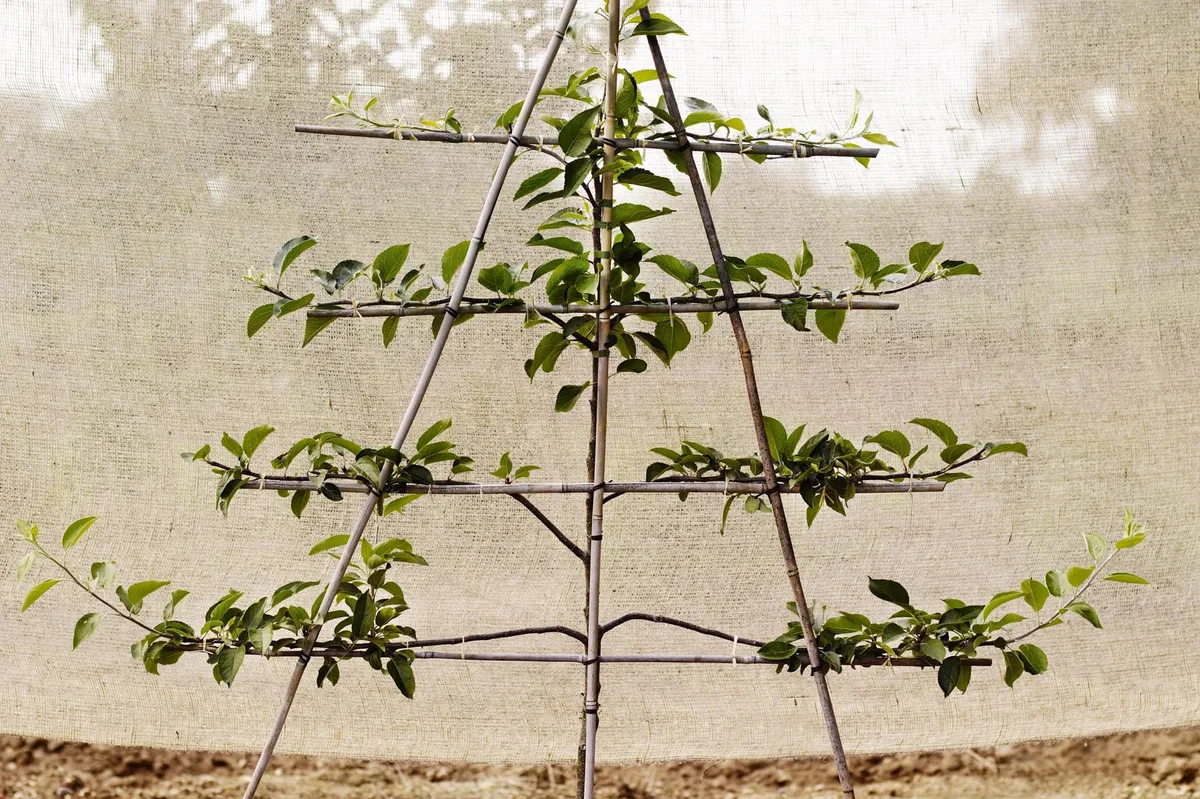
Follow Chris’s step-by-step guide and learn how to create your own espalier fruit trees.
Step 1
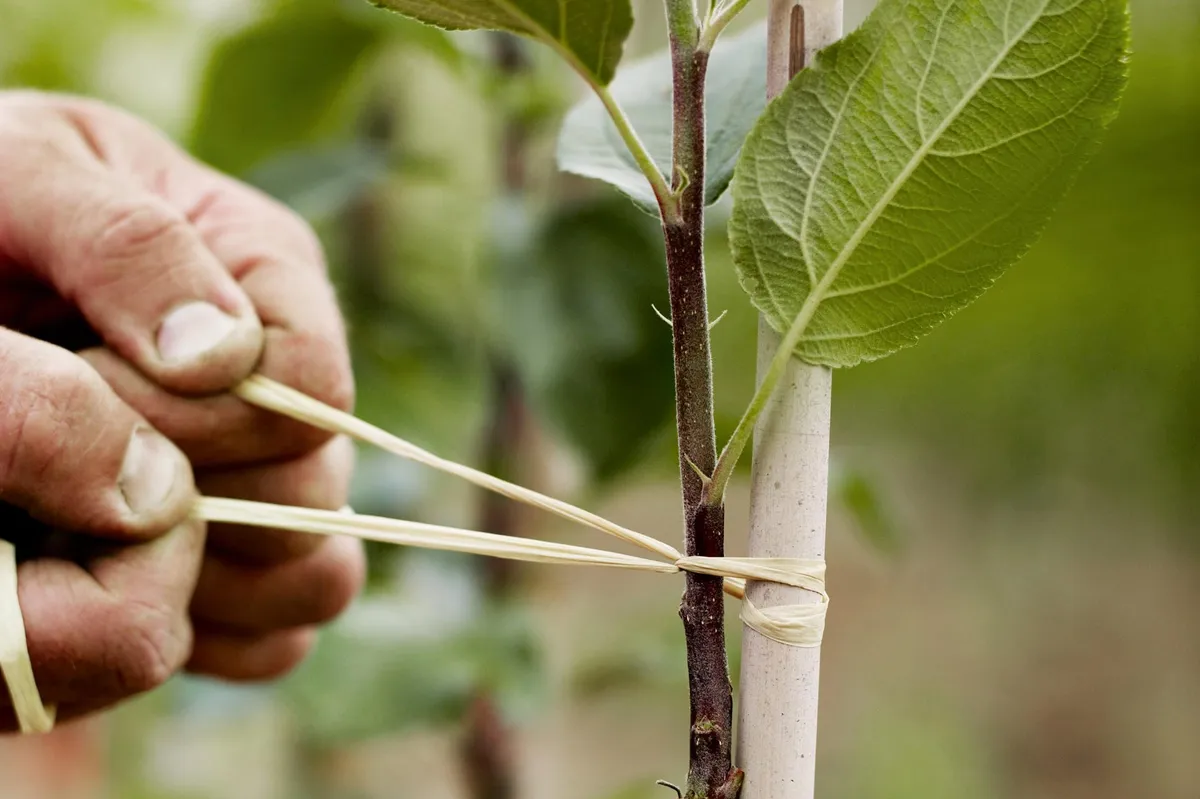
Chris bud-grafts his chosen variety on to a dwarfing rootstock in winter, and then the growth is tied into a cane as it grows.
Step 2
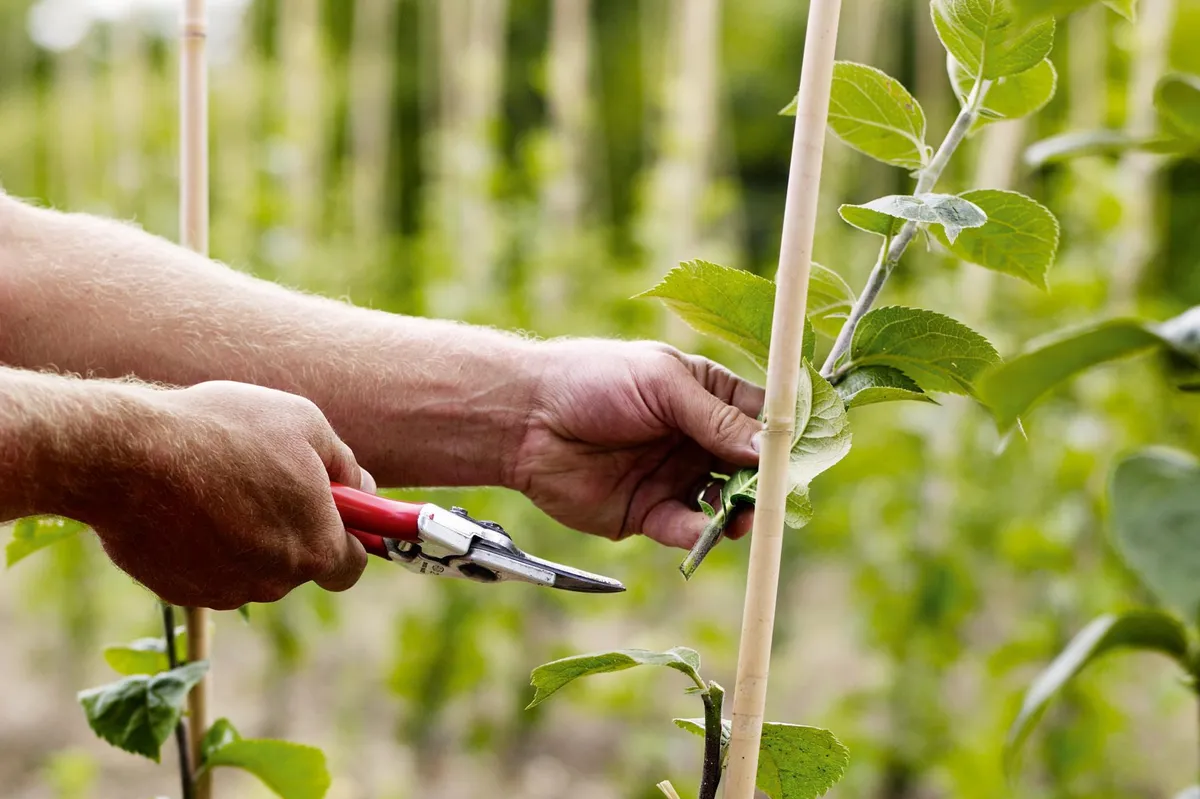
In August it is cut back to the required height: 35cm from the ground for a step-over, 50cm for most other shapes. After 15cm of re-growth, Chris cuts the tree back to the exact same point again. This creates a cluster of buds on one point of the stem which will then all grow at the same level, and makes it easy to select two branches to train horizontally, or at 45 degrees for a Belgian fence. Once these buds turn into shoots, Chris or Sarah selects the best-placed ones and starts tying down. A central stem can be selected from the cluster to carry the shape on upwards. The double cutting back helps to keep this central point in balance with the rest of the limbs, and prevent it from drawing too much energy.
Step 3
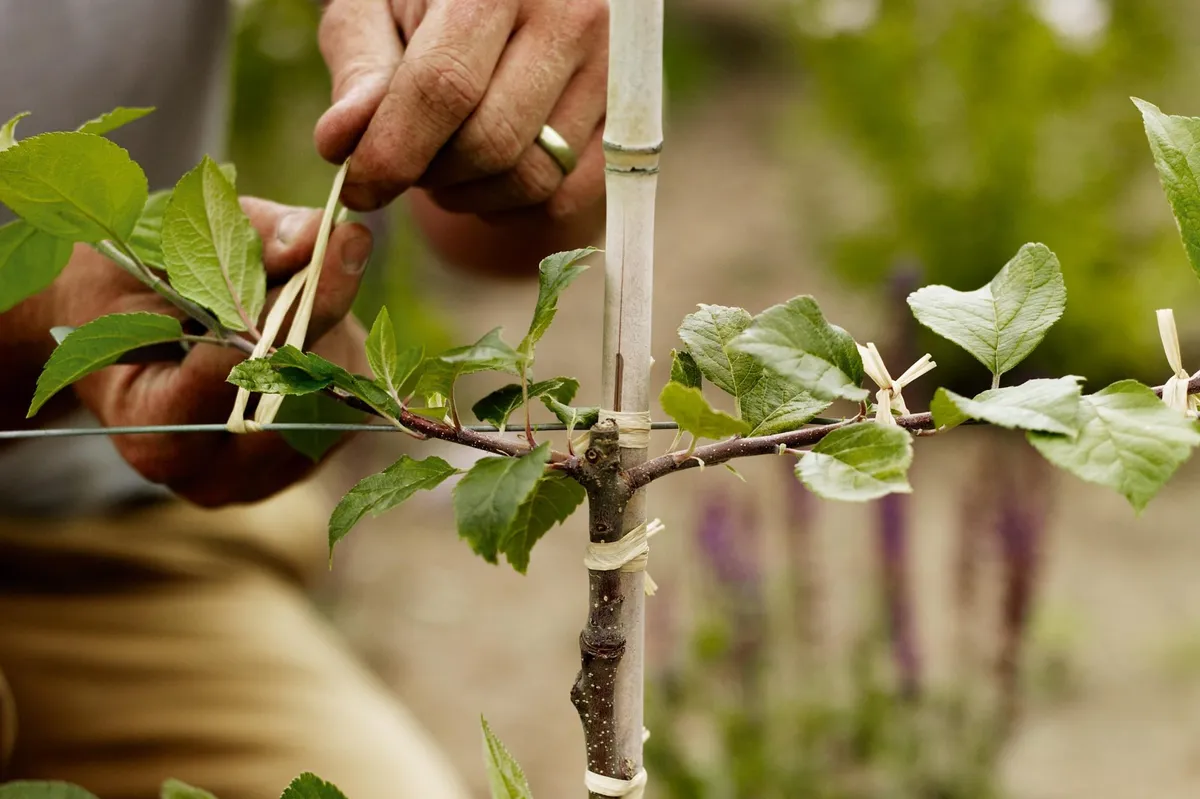
Growth is tied into the frame every 10cm during the crucial early stages of training, and is only ever left to grow free for 15cm before tying in.
Step 4
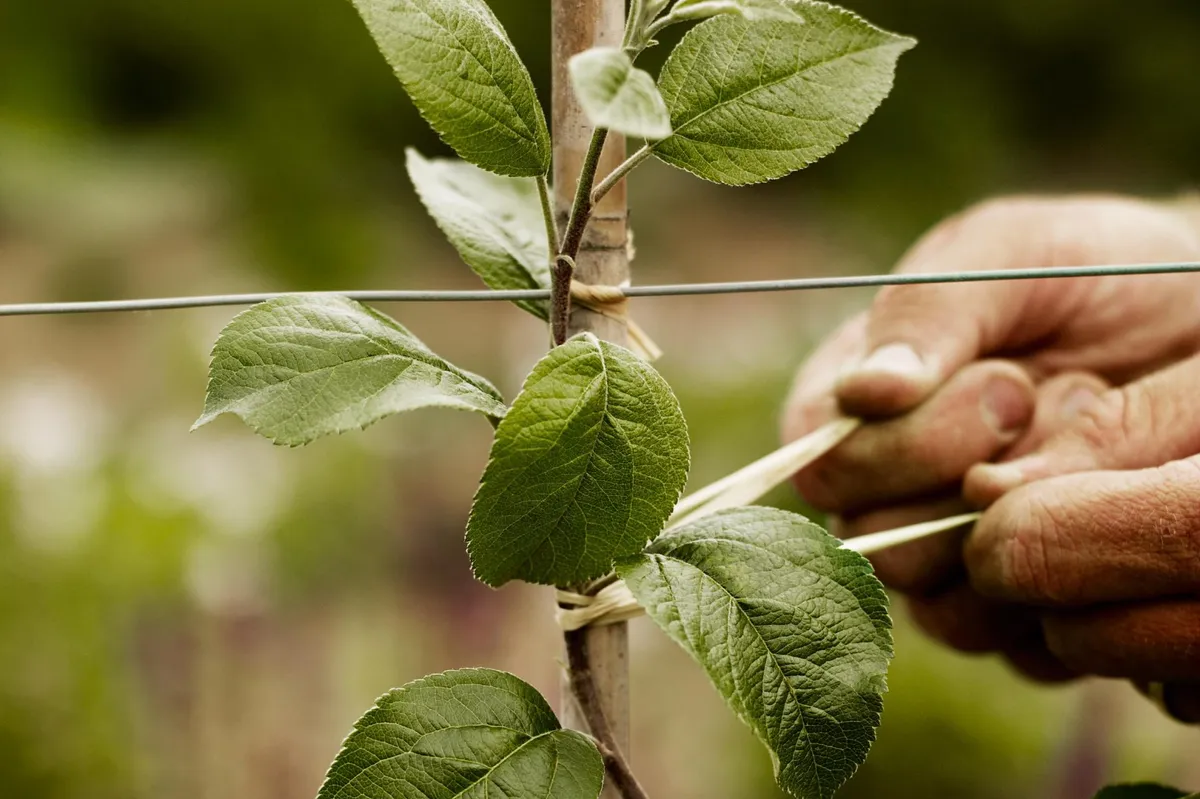
Corners can be sharp or shallow on an espalier fruit tree, but it is vital that the shape of the two sides is perfectly matched.Pruning espalier fruit trees
When to prune espalier fruit trees
The Lorette System of Pruning book advises pruning in the second week of August. At this time, shortening days send a signal to the plant not to put on further growth, and all energy goes into making fruit buds instead. Cut earlier than this and you risk encouraging new shoots in places you don’t want them; later and the buds have less time to swell.
“We also cut back new shoots twice, as Lorette advocates, which adds another year on to the process but helps create a cluster of shoots in one small area," says Chris. "This allows you to select two shoots to train from almost exactly the same point of the stem.”
Got a freestanding apple or pear tree? Read our expert advice on pruning apple and pear trees.
How to prune espalier fruit trees
- The horizontal stems will produce side shoots that should be cut back to about the third or fourth leaf above the main stem. It is these short stems that will become the spurs where fruit is produced.
- During the winter, when the plant is dormant, reduce to about 5cm any shoots that have grown since the summer pruning. After a few years the spurs will become congested, so thin them during the winter, starting with any shoots that are growing into the wall, facing downwards or pushing against another shoot.
Other trained fruit tree shapes
Double U-cordon
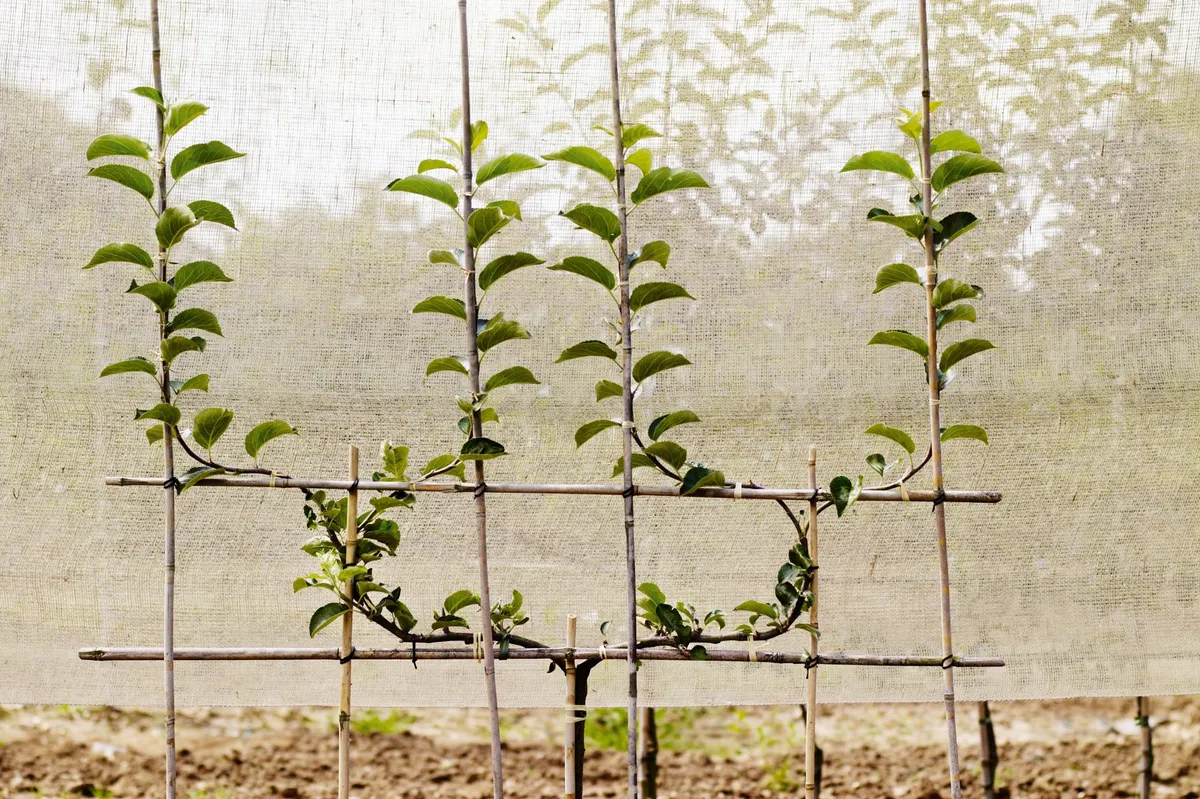
This shape takes a minimum of three years to form. “This is a good shape because you are breaking the vertical plane twice, each time halving the sap and slowing the whole tree down,” says Chris. “There is less chance of one limb taking over, or of the whole thing going out of control.”
U-cordon
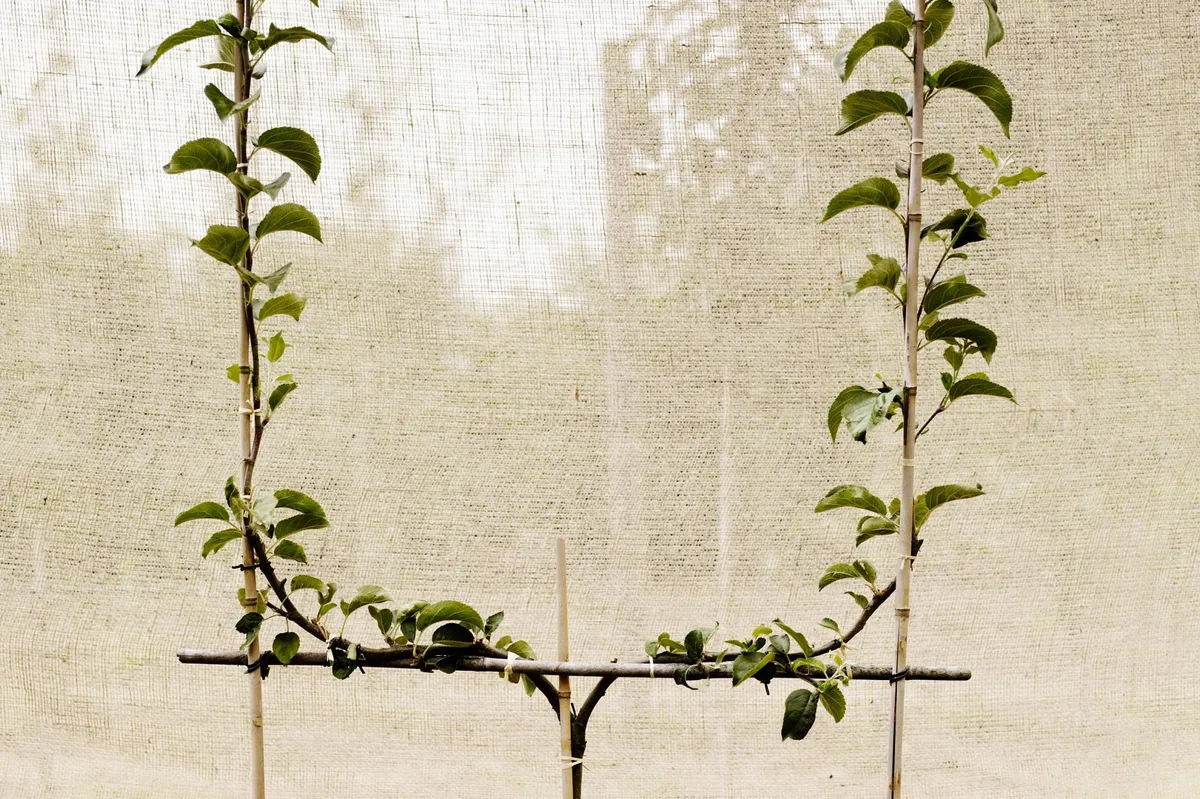
Two or three years for this espalier. “A brilliant, simple shape. Great planted either side of a path and grown over to make a free-standing arch.”
Palmette verrier
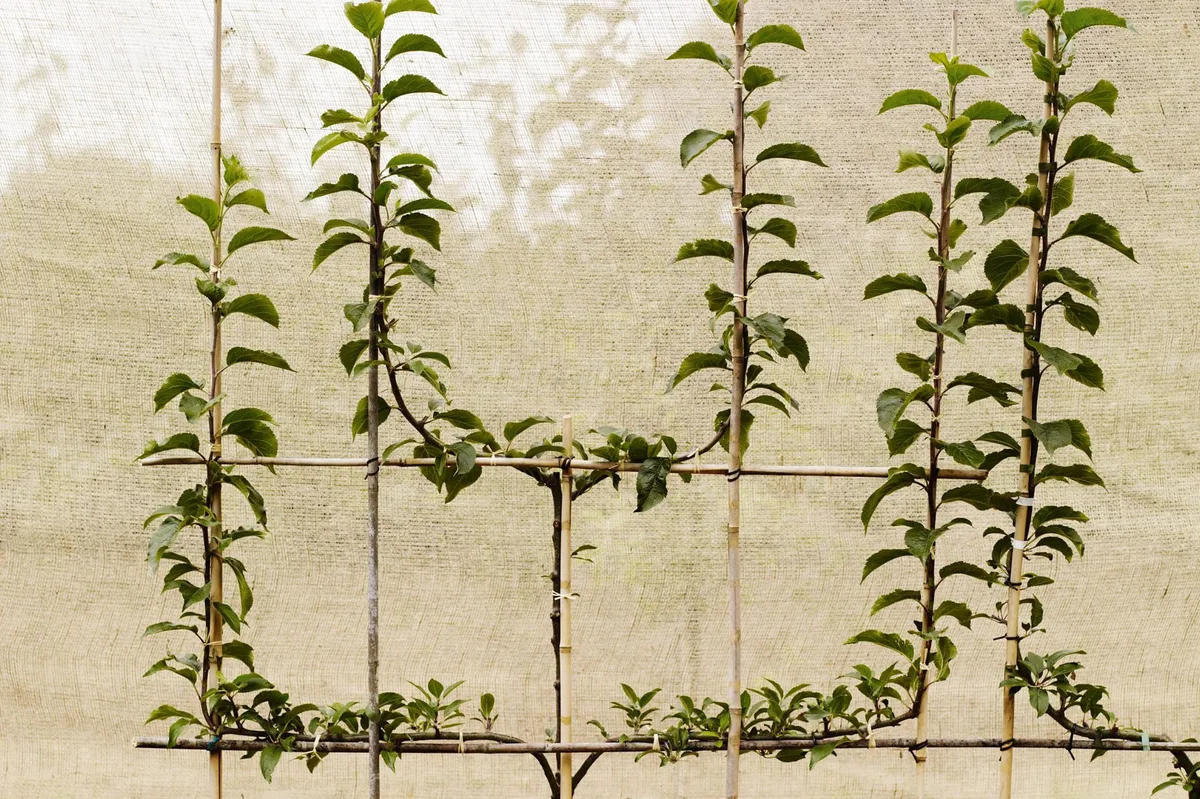
Minimum three years. “Here again the central stem is broken so it’s a lovely, easily managed espalier shape once it is set.”
Belgian fence or croisillon
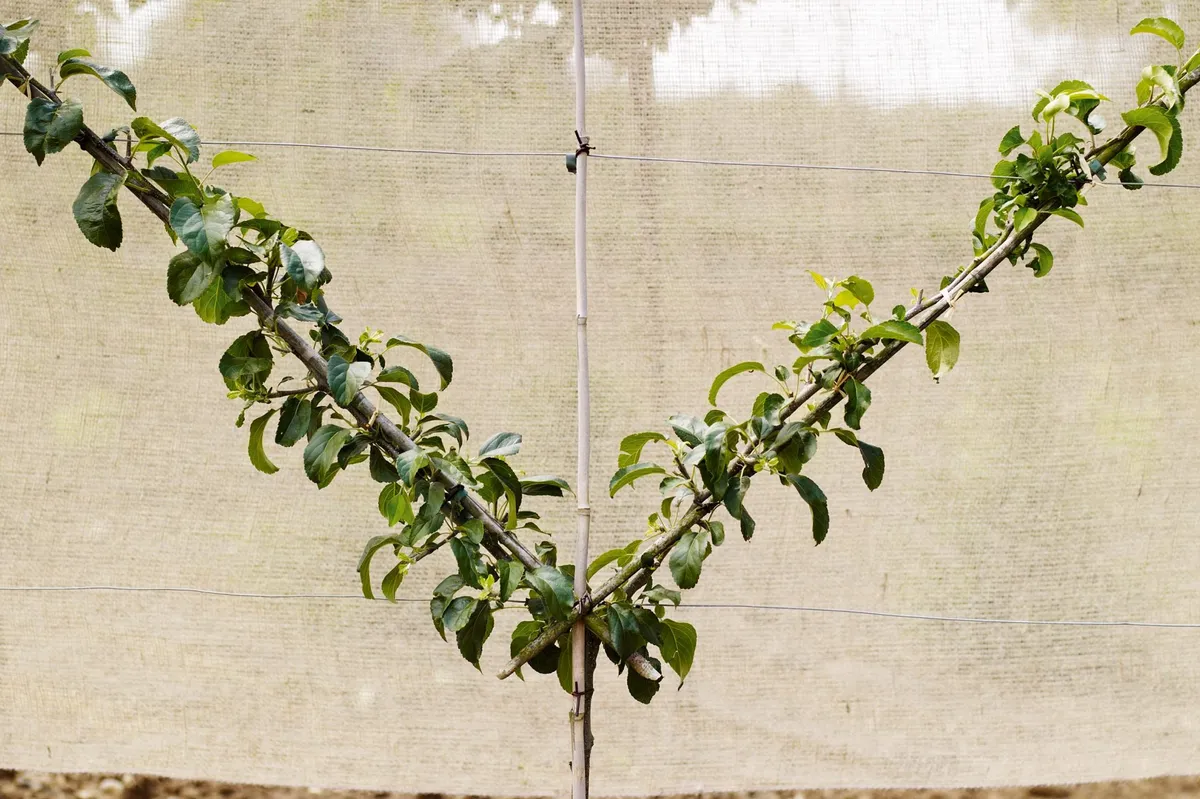
Minimum two years. “Plant a series of these in different cultivars to make a living fence. Where they cross they often form a natural graft.”